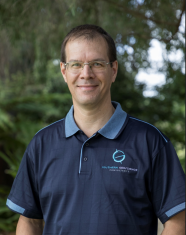MEGWA February 2024 Meeting

“A Series of Case Studies to Highlight the Use of Geophysics for a Range of Hydrogeological Applications”
by Karen Gilgallon, Senior Principal Geophysicist, Southern Geoscience Consultants
Geophysics is useful in a range of hydrogeological settings. A series of short case studies will cover a range of geophysical applications in coastal sedimentary aquifers, fractured rock aquifers, paleochannel aquifers and mine dewatering.
Studies of coastal sedimentary aquifers at Exmouth and the North Perth Basin, Western Australia, will highlight the successful use of airborne electromagnetics (AEM) and ground electrical resistivity imaging to map the aquifer structure and saline water interface. Case studies from southwest WA and the Pilbara will illustrate the successful use of AEM, radiometrics, and ground-based electromagnetics for mapping fractured rock aquifers. Finally, a controlled source audio magneto-tellurics (CSAMT) survey at the Gold Quarry mine on the Carlin Trend following a pit wall failure was used to identify structures impacting groundwater flow with implications for pit wall dewatering.
These case studies highlight how geophysical techniques can be used as cost-effective tools for both detailed and broad hydrogeological problems including de-risking bore placement.

“Groundwater Targeting for Mine Development; Case Study from the Mt Richardson Haul Road Project”
by Remke Van Dam, Technical Director – Near Surface, Southern Geoscience Consultants
Water plays a key role during mine development with de-risking of development projects requiring effective tools for water management and planning. However, groundwater studies are commonly hindered by limited data and costly exploration drilling. In the context of a 180 km long remote haul road construction project in Western Australia, we discuss a multi-disciplinary approach to groundwater exploration across a wide range of spatial scales that uses open-file geophysical data, geological and geomorphological mapping, targeting strategies, and follow-up ground surveys. With fractured rock aquifers as the primary target (paleochannels in the area largely contain hypersaline water), the process to identify potentially water-bearing structures and lithologies started with the compilation of all relevant open-file geoscientific data, into a GIS environment. A structural interpretation of airborne magnetics data then focused on interpretation of faults and fractures within the road corridor. Combined with automated stream routing and watershed analysis of SRTM data and logistical considerations this resulted in a targeting matrix. Next, ground geophysical surveys were executed at high- and mid-priority but low-confidence target locations to define specific groundwater targets for follow-up drilling. The integrated approach to groundwater targeting from project to target scale as documented in this work has significant benefits in mine development projects, including higher confidence targeting, less exploration drilling, lower costs and project risks, and expediting mine development.
Cost
FREE
Zoom meeting details
Please click the link below to join the webinar:
https://us02web.zoom.us/j/83399807039?pwd=akdjLzdpa1pOMFh2dmpnYVZ0OG5TUT09
Passcode: 863420

|
|